- Lesson One: The Number One
- ... in Geometry
- ... in Nature
- ... in Culture
- "Uroboros" (related artwork by the author)
- "Creation" (related artwork by the author)
- Lesson Two: The Square Root of Two
- ... in Geometry
- ... in Nature, Part 1
- ... in Nature, Part 2
- ... in Culture, Part 1
- ... in Culture, Part 2
- "Duality" (related artwork by the author)
- Lesson Three: The Square Root of Three
- ... in Geometry
- ... in Nature
- ... in Culture
- "Vesica" (related artwork by the author)
- Lesson Four: Phi, or the Golden Proportion
- ... Intro, Part 2
- ... Intro, Part 3
- ... in Geometry
- ... in Nature
- ... in Nature, Part 2
- ... in Culture
- "The Flower of Phi" (related artwork by the author)
- Lesson Five: The Five Perfect Solids
- ... Intro, Part 2
- ... The Tetrahedron
- ... The Octahedron
- ... The Cube
- ... The Icosahedron
- ... The Dodecahedron
Let's take a look at some examples of how both nature and past cultures have represented the number one. It should be noted that it is difficult to say whether some cultures presented number in their images in a way which concurs with our current interpretation of it consciously or not (and this is effectively impossible in the case of nature's use of number). As already stated, however, the major function of sacred geometry is in that it gives its observer a filter to find connections with, and by doing so increases the intimacy of the observer with his or her environment. Sacred geometry does not necessarily provide ultimate truths in what would be considered a traditionally pure scientific fashion, because that is simply not the point.
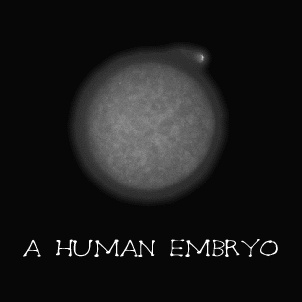 Taken From: CREDITS MISSING
Taken From: CREDITS MISSINGOne of the most perfect examples of the ideas represented by the number one on the microcosmic scale is the unfertilized embryo. This perfect little sphere is totally complete unto itself - whole and without internal movement, much as is our geometric sphere. However, within the static sphere resides the potential to create an entire living being made up of millions of cells. The embryo is simply waiting for the moment of fertilization, from whence it begins to divide, and then divide again, and again. The process continues from one cell to two, two to four, to eight, to sixteen, and on until there are literally millions of cells combined together to create a new unity - the completed animal. Thus unity creates unity by division, and another paradox is overcome. This brings us neatly to the next easily observable example of unity in our world - one human being.
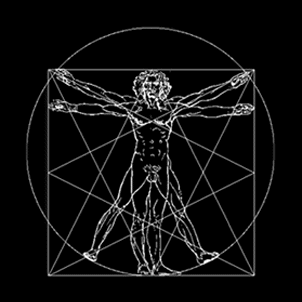 Taken From: CREDITS MISSING
Taken From: CREDITS MISSINGThe human, as noted, is generated from a single embryonic cell. The fully matured human being never looses its original state of unity . It simply grows in complexity, retaining that original unity for the duration of its existence. It has many distinguishable parts - the common division of mind, body, and spirit being but one example - but all these parts are ultimately interrelated and indivisible, creating one being, whole and complete unto itself.
If we temporarily look beyond the physical body that has been created by the division of the original embryonic cell, we can see that the unity that is each human being is comprised of much more than simply a body. Many believe that humans are, in fact, a single focal point of consciousness in a universe-wide sea of consciousness - although most express this idea through different languages of metaphor and symbolism.
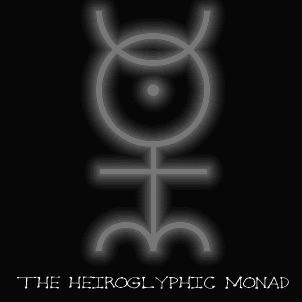 Original artwork created by A. O'Connor for Nature's Word using Adobe Photoshop 5.0.
Original artwork created by A. O'Connor for Nature's Word using Adobe Photoshop 5.0.In Western Mystery Traditions, the term "Monad" is used to describe this idea of a person as a focal point of consciousness within a sea of greater consciousness, and it is believed that all things that can be considered a unity unto themselves constitute a monad as well.
At left we see the symbol that has been traditionally employed to denote the monad, known as the "Hieroglyphic Monad." Note that the Hieroglyphic Monad is the root symbol of many ancient astrological and alchemical symbols, such as those used to denote the planets, male and female energy, and the "Three Principles" of Alchemy (Sulfur, Salt, and Mercury).
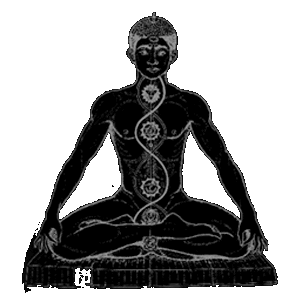 Taken From: Joseph Campbell's book The Mythic Image, Princeton Bollingen, 1974
Taken From: Joseph Campbell's book The Mythic Image, Princeton Bollingen, 1974The idea behind the monad is that we as humans are built of millions of cells, each of which is a monad, i.e., each is a focal point of consciousness, albeit a much simpler form of consciousness than our own. Large groups of these extremely simple centers of consciousness combine to form larger parts of our total consciousness - an idea best represented by the Chakra system of Hindu Yoga. Each one of these various levels of consciousness, which would all individually be considered a separate monad, combine to form the total consciousness which we experience daily as our individual conscious awareness.
The process does not stop at this level, however. If we took all of the human beings on the planet Earth as monads - centers of consciousness - and considered them as a totality, then we would have a planetary human monad. The total consciousness is, of course, also considered a monad, and might be best described by Jung's term "the Collective Conscious." Bear in mind that there have been several psychological studies in recent years which point most definitely towards the fact that a collective consciousness exists as a link between all human beings.
 Taken From: CREDITS MISSING
Taken From: CREDITS MISSINGFurthermore, if this planet-wide human monad was combined with all of the animal consciousness monads, and all of the subtle planetary vegetative monads, and all of the even more subtle planetary mineral monads, then we would have a singular great monad - the unified center of consciousness known as the planet Earth.
The process continues, on and on. If we consider the unified conscious energy of every individual body in this solar system, then we can begin to perceive a greater monad - the monad of our solar system. And of course, the solar system's monad combines with all others to make the Milky Way galactic monad. The Milky Way monad is but one of thousands of its size and breadth. These all, in monadic theory, combine to form what we can only vaguely understand the idea of - a universal monad. That is, the entire universe as a single focal point of consciousness, made up of a literally countless number of smaller points of consciousness, all of which work together in unison to generate the greater whole. This idea of the universe as one consciousness is what many religions would call "God."" It is also what sacred geometry would label Unity, or One.
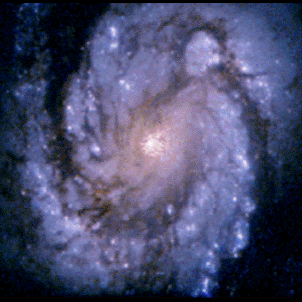 Taken From: CREDITS MISSING
Taken From: CREDITS MISSINGThis string of ideas is one of the most perfect understanding of a universal One that sacred geometry can offer: the One that is constituted of ever diminishing Ones, and which is but a part of ever greater Ones. This idea of monadic microcosm-macrocosm is easy to superficially understand in a comparably intellectual sense, but if we are to truly understand it we must feel the idea with our intuition as well. The following quote of Joseph Campbell's serves us well at this point:
"...there is still one more degree of realization... namely that termed in Japanese "ji ji mu ge" - "thing and thing, no division" - no separation between things. The analogy suggested is of a net of gems: the universe as a great spread-out net with at every joint a gem, and each gem not only reflecting all the others but itself reflected in all. An alternate image is of a wreath of flowers. In a wreath, no flower is the cause of any other, yet together, all are the wreath."


